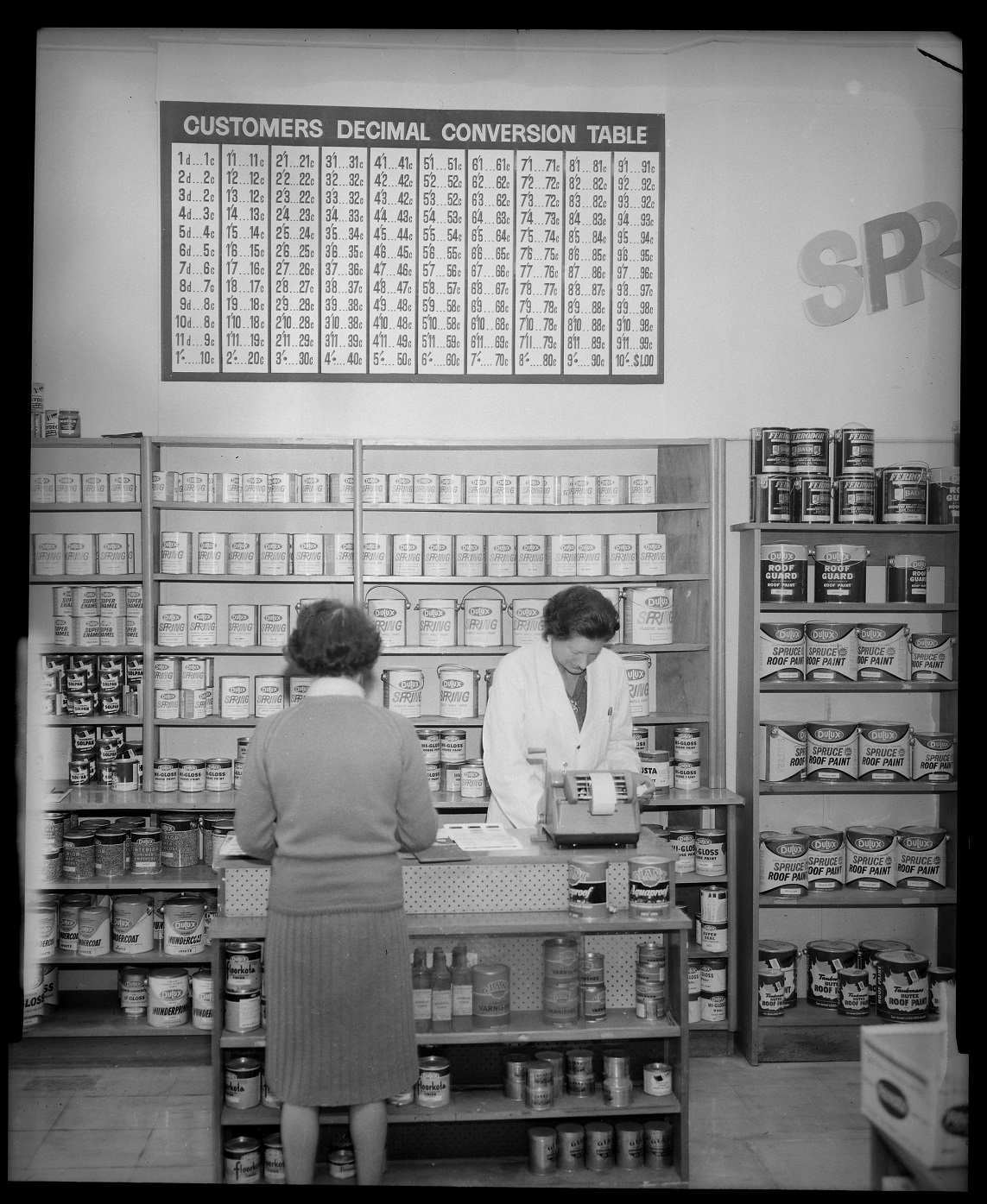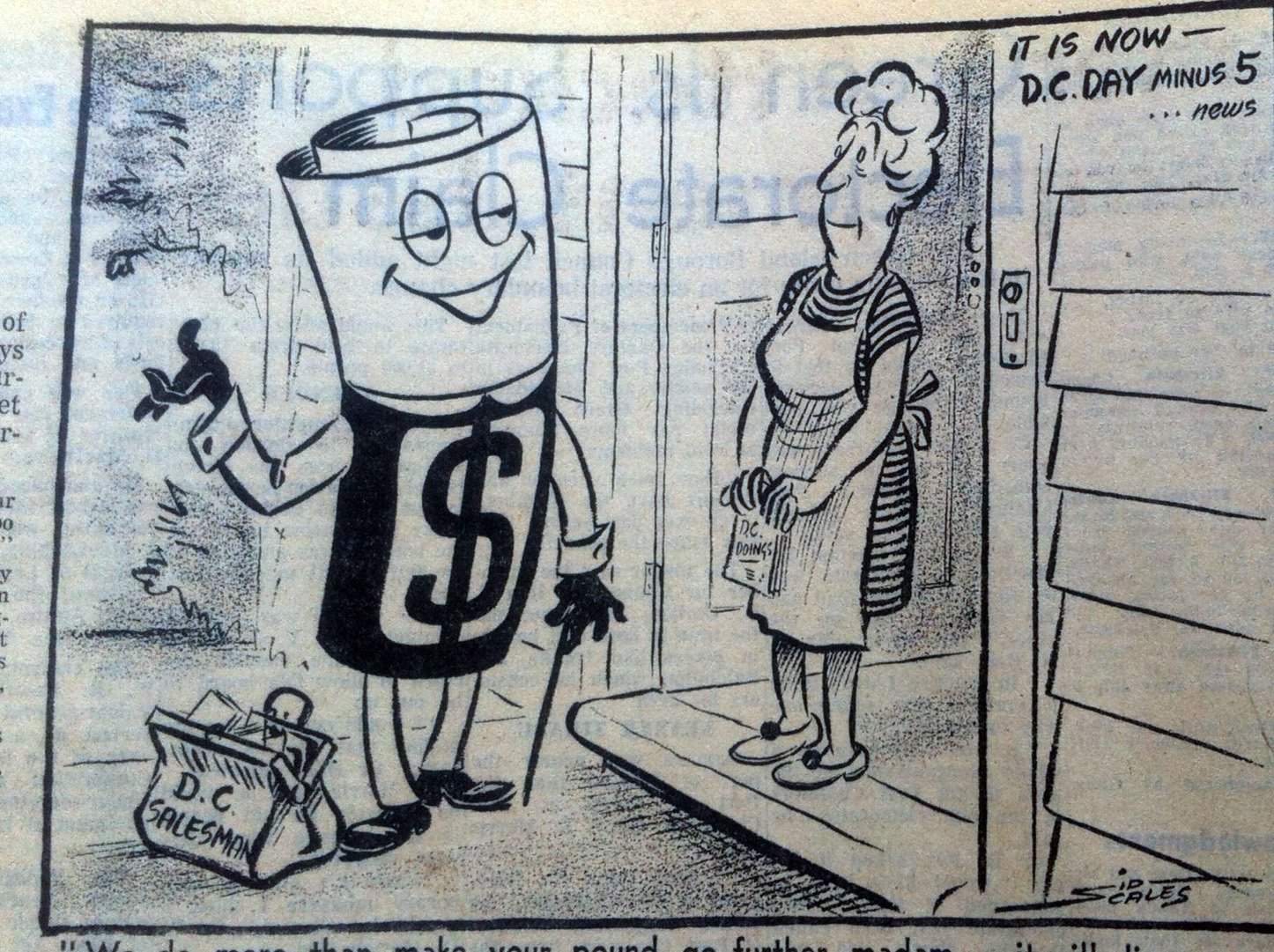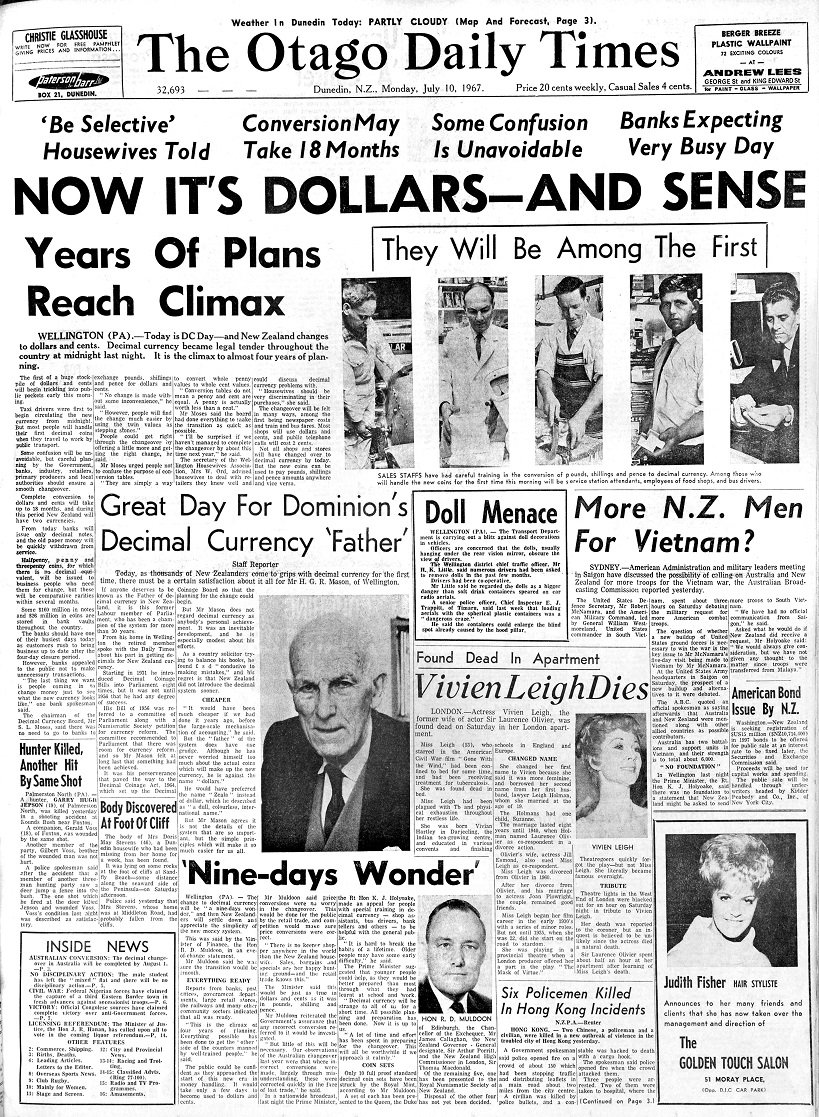
New Zealanders of a certain age have the jingle "on the 10th of July, next year" ingrained in their psyche.
As the country prepared to do away with pounds, shillings and pence and enter the brave new world of dollars and cents, this was a fundamental shift in monetary matters which needed more than a jaunty tune to explain.
Naturally, the ODT did its bit to make sure readers were ready for the fiscal dawn of July 10, 1967.

Milk, butter, tea and sugar were the first four things highlighted — and fair enough, although our now highly caffeinated country might wonder about the exclusion of coffee from the list.
Fifth in the series, on June 24, the paper informed readers that the Price Tribunal which had been charged with setting decimal prices had decided that the 3s 3d pack of 20 cigarettes should be converted to 33c.
"The tribunal has also tried to maintain margins when converting tobacco prices. For example, 2oz [metrification started in New Zealand in 1969 and finished in 1976] for 5s 4d will cost 54c, while 5s 7d worth will cost 56c."
Other product prices that the ODT converted for curious readers were eggs, potatoes, flour, sausages, a razor, nail polish and lipstick, and the $2.50 terylene shirt.
Readers, of course, had questions.
"Interested" — back then the ODT allowed anonymous correspondence — wrote: "We, the public, have been told that we cannot lose anything in the changeover. I cannot see that a war pensioner on a pension of £2 5s monthly gains anything when he finds his pension becomes $4.48 monthly instead of $4.50 monthly."

Parking, then as now, was also a hot topic.
The ODT accompanied Mr R. McGregor, of the Dunedin Traffic Department, as he and his staff tested 1200 parking meters to see if they would accept the freshly-minted 1c and 2c pieces — following up a story in the paper which had highlighted the problem.
"Of the first 60 tested in the High St area, 13 were found to be faulty."

It was only going to be a brief reprieve for parkers though, as repairs were expected to be carried out within days.
The grand change could not come fast enough for the ODT, which editorialised on the Saturday before "DC day" that it had been a long time coming and would not be very difficult.
"There will be some hesitation, mistakes and small arguments, but all that really matters now is the practice of decimals, not the principles of the conversation. A little patience, good humour and trust in the shop assistants and we should all see the next few days through without much bother."
July 10 dawned with a famous ODT headline "NOW IT’S DOLLARS — AND SENSE" and a variety of unfamiliar coins and notes in people’s wallets and purses.












